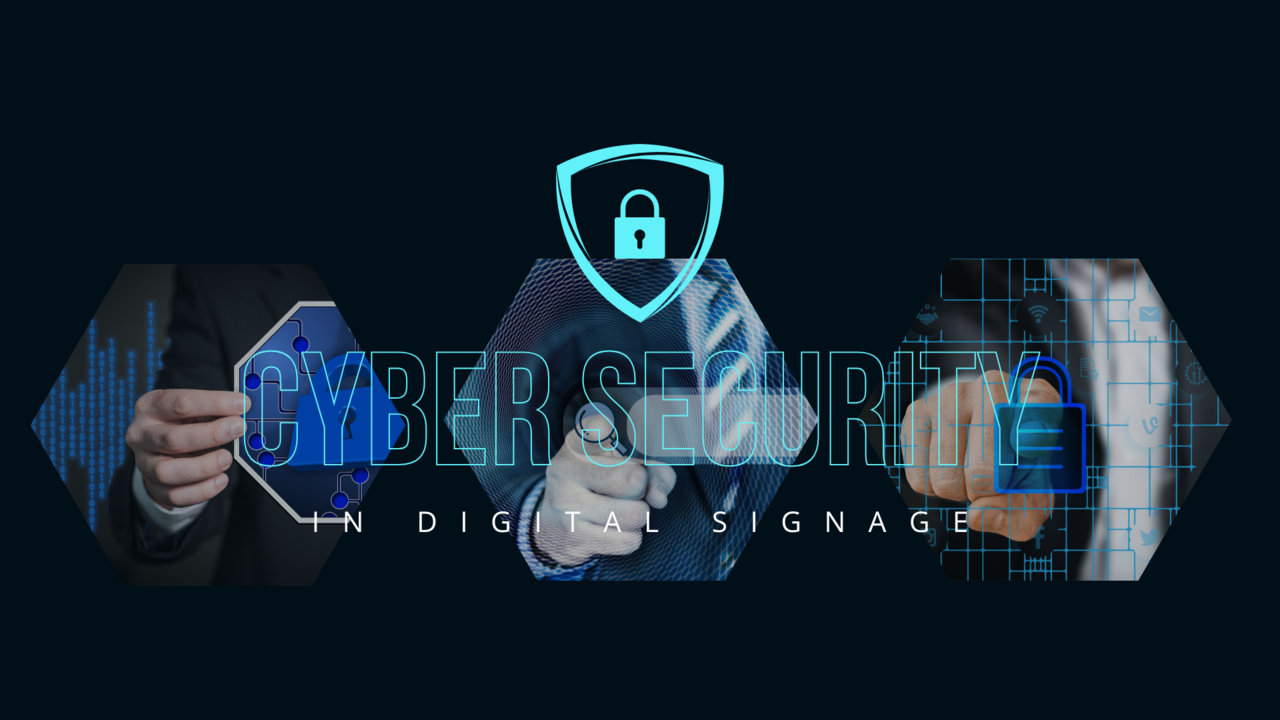Cybersecurity in Digital Signage: A Shared Responsibility

Digital signage has evolved from simple, stand-alone displays into fully networked platforms capable of delivering dynamic, targeted content across multiple locations. This connectivity, while powerful, also introduces cybersecurity risks. Protecting these systems is not a one-time activity but a shared responsibility among manufacturers, vendors, system integrators, and end users.
1. Manufacturers: Secure by Design
Manufacturers set the foundation for digital signage security. They must:
-
Embed security features such as encrypted communication, secure boot, and regular firmware updates.
-
Implement vulnerability disclosure programs to quickly patch and communicate threats.
-
Comply with global standards (ISO/IEC 27001, GDPR) to ensure privacy and data protection.
2. Vendors & Software Providers: Ongoing Protection
Vendors supplying media players, content management systems, and cloud services are equally crucial. They should:
-
Maintain secure hosting environments with firewalls, intrusion detection, and data backups.
-
Provide timely updates to software and content delivery platforms.
-
Offer security training for clients deploying their solutions.
3. System Integrators: Secure Deployment
Integrators bridge the gap between product and environment. Their role includes:
-
Assessing network risks during design and installation.
-
Segmenting networks so signage traffic is isolated from sensitive corporate data.
-
Configuring strong authentication for administrators and users.
4. End Users: Day-to-Day Vigilance
Even the most secure system can be compromised if end users neglect basic practices. Organizations operating digital signage must:
-
Apply strong passwords and multifactor authentication.
-
Limit user privileges and monitor access logs.
-
Train staff on phishing and social engineering risks.
5. Collaboration is Key
No single party can safeguard digital signage alone. Manufacturers must build secure products, vendors must maintain them, integrators must deploy them correctly, and end users must operate them responsibly. Open communication and regular security audits across this chain drastically reduce vulnerabilities.
6. Building Trust Through Security
In an age where digital signage can integrate with payment systems, customer data, and live social media feeds, cybersecurity isn’t just a technical requirement—it’s a business imperative. Organizations that treat security as a shared responsibility protect not only their networks but also their brand reputation and customer trust.
-
Xchange Advocates are recognized AV/IT industry thought leaders and influencers. We invite you to connect with them and follow their activity across the community as they offer valuable insights and expertise while advocating for and building awareness of the AV industry.






Please sign in or register for FREE
If you are a registered user on AVIXA Xchange, please sign in
All too often consumer grade PCs end up NOT being patched but also stuck in BYOD hung up trying to patch. No USB protection and fun target. Once it goes interactive then a whole other set of variables come into play. Security with digital signage and interactive digital signage is another redheaded stepchild as a rule (along with ADA and accessibility)